Hey Art Nerd,
How long does it take to make a piece of art?
***
Yeah, I bet y’all thought I was dead.
Can’t exactly blame you, but no. I was busy finishing up my degree and experiencing severe existential dread and living in poverty. You know, normal artist stuff.
Now I’m going to mine your questions out of my ancient inbox and find out what’s going on.
That sounds like a cop-out answer, but it’s true, dammit.
The real response is to work with other people’s’ expectations. You get a client, client demands work done by a deadline, you finish that work within the timeframe. The client isn’t gonna care how many times you need to redraw someone’s foot or hand or face or brain — you need to get it done, and you need to get it done yesterday. If it sounds like I’m complaining, I’m really not. That’s just the reality for a working artist.
And not all art and not all media are equal. I primarily work with digital artwork. Some people make cast bronze statues, some people do vast landscapes. These take different amounts of time to do. Some way, waaaay more than others.
Like making bronze statues. I wouldn’t wish that on my worst enemy.
And when you start working for a client, you need to keep several things in mind: think about their expectations and desires and how you can execute said expectations and desires realistically. It takes practice to figure out how long that will take you (and so how much you should charge).
The things that change the time-to-completion with art pieces like mine come in multiple flavors: number of characters, complexity of the character, the pose of the character, whether or not there is a background, how complicated the shading is, the resolution of the finalized image, the intended use of the final image, etc.
To show you what I mean, here’s a step-by-step example from my work. I tend to draw a lot of characters for people, and for the sake of avoiding a lawsuit, this is an original character. She’s a character that I made up for a Legend of the Five Rings campaign, because nerds are losers and want to see their characters come to life.
(Seriously it’s a really good place to get clients. Helps that I also play this game. What a loser.)
I start by blocking out poses. This one took like a minute to do, if that. But that’s not the time-consuming part. What you don’t see are the number of different poses I tried making, before finally settling on this pose. Still, though, time for starter sketches is only a few minutes. If I’m doing this for a client, then I will be running much smaller versions of poses by them. And there will usually be a lot of poses; most clients don’t know what they want until they see it.
Now comes the lineart layer. Some pieces don’t need lineart (which saves a lot of time), but I prefer making a lineart layer to help clarify the details. And this character will be incredibly complicated when I get further.
This character is wearing armor. So I also made an anatomical reference layer in order to keep this character looking believable. And I also won’t be sharing that layer here, for what should be obvious reasons.
All in all, this part of the process takes about two to three hours. We’re getting deeper.
Flat colors. Again, this part varies. When I made this character sketch, it was meant to be able to appear in different environments and under different lighting conditions. If this was a one off, I might just combine painting and colors and leave it at that, but since this character is a bit more complicated I made flat colors. This gets saved specially to serve as a reference, should I ever want to redraw this character in different lighting.
Flat colors are the most tedious, boring part of the process. Thankfully it only takes half an hour.
Yeah, I bet you thought I was going to move on to the shading, didn’t you? But the background comes first. The character’s lighting should be informed by their surroundings. Light tends to bounce, both off the character and onto the character. In this case, however, the character is very much the focus, and I don’t want to draw attention away from her. So I just gave her a simple tatami mat, since she’s a samurai-type character.
This background (if you can even call it that) only took like a second; I haphazardly slapped it together. Backgrounds can take much, much longer, depending on what I’m trying to do.
This is my favorite part. Highlights are meant to accentuate the figure of your character or creature, and shading gives it volume. You ask yourself where the light sources are in three-dimensional space, and show how the character fits into that space.
I choose yellow and purple and sky-blue for this one; yellows for highlights, purple for shading, and sky-blue as an outline. Yellow and purple are the main stars here, since they’re complimentary colors and thus tend to go well together. The yellow is always a bit pale, and the shading is always a very, very dark shade of whatever the complementary color is. This keeps the values from clashing with one another and accentuates the blacks. If I were to spend more time on this, I would continue painting until the image is as sharp as possible even without the outlines.
Shading takes an hour or two. Then I tidy up any additional details, add a signature and a name, and-
So all in all, this character took me six hours to make. Your results will vary, depending on experience and tools available, and if you want to make a living at it then you need enough practice to know how long sketching or shading will take you personally so you can plan your work. Last year, I would have taken far, far longer to make this same exact character using the same program (Paint Tool Sai) and the same drawing tool (Cintiq 13HD — yes, this cost a pretty penny and I’m still feeling it).
Anyway, I hope this gives you a picture of the process.
Geddit.
Because I used a picture to illustrate my process.
See ya.
The Art Nerd
Got an art question? Ask the Art Nerd! asktheleagueofnerds@gmail.com
Twitter @AskTheLeague / facebook.com/asktheleagueofnerds


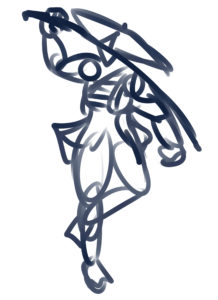
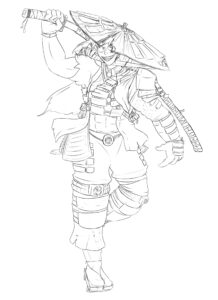

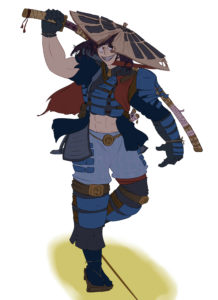
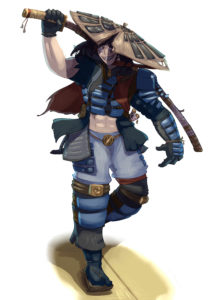
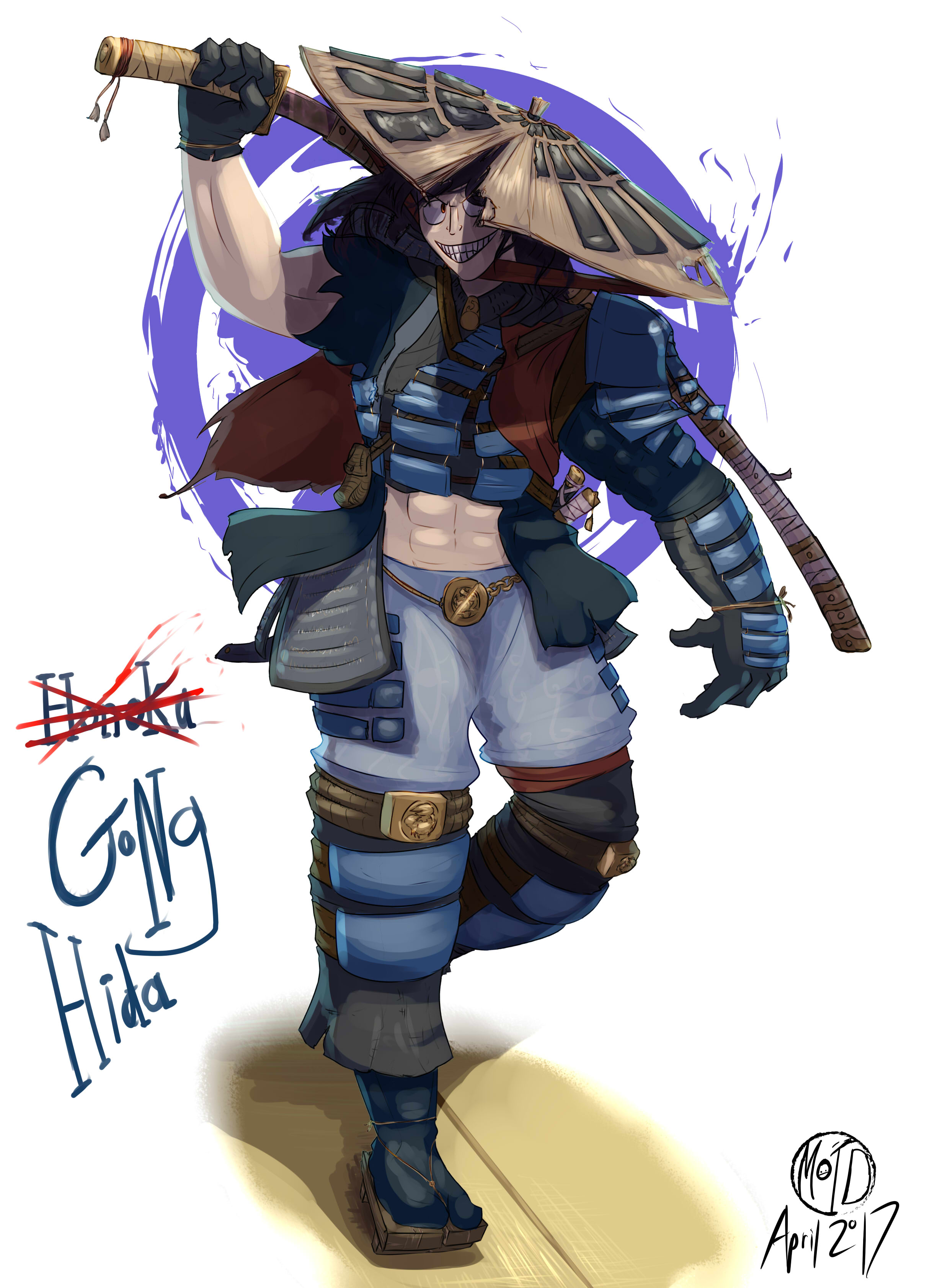
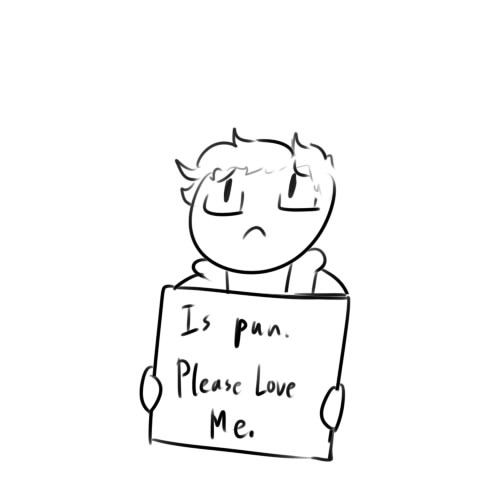
I liked the pun :3 Nice response to a pretty broad question!